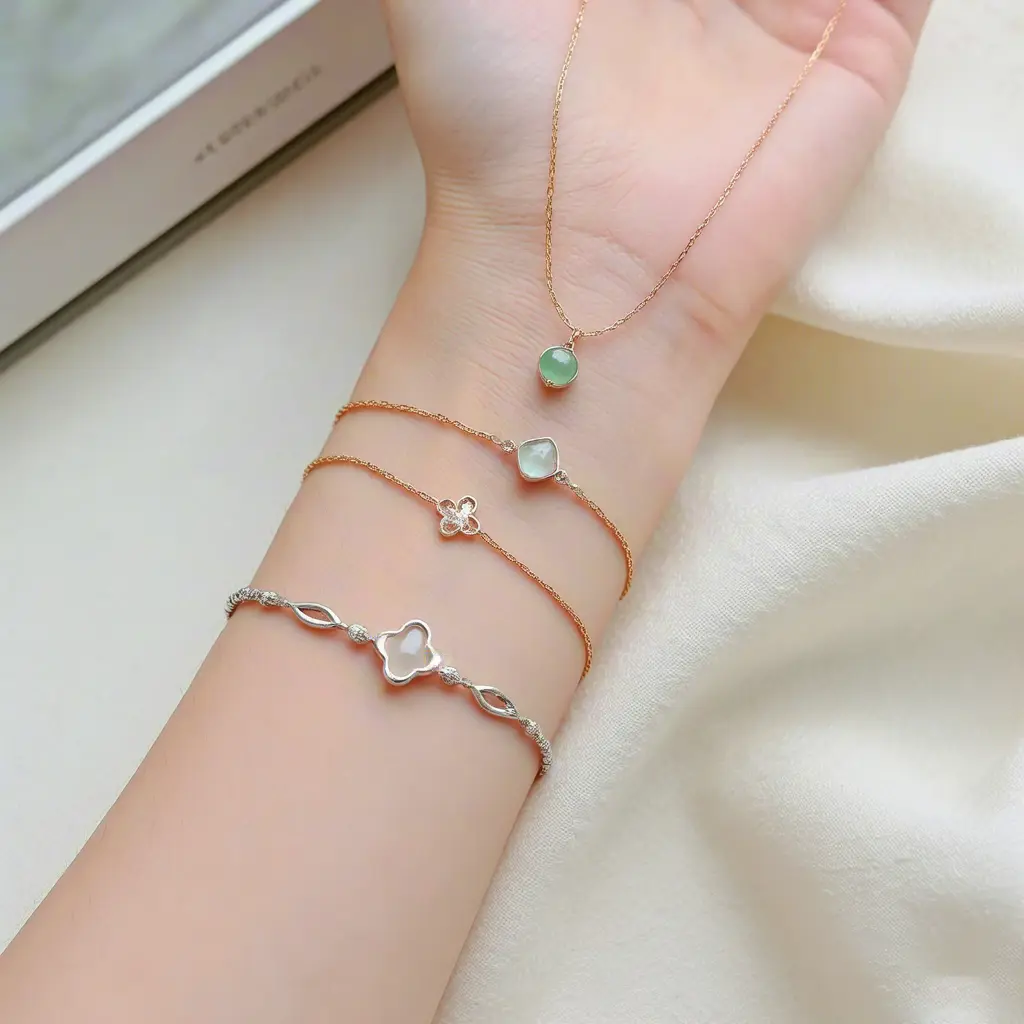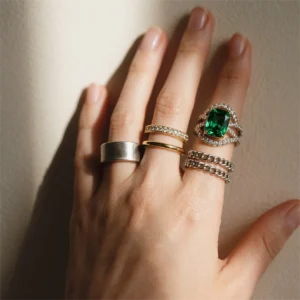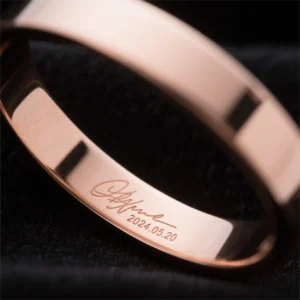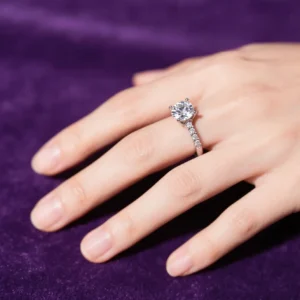Nickel allergies are a common issue when experiencing discomfort from jewelry. Redness, itchiness, and even green skin discoloration can all be signs of a nickel reaction. That’s why this blog post is dedicated to the importance of nickel-free jewelry. We’ll share essential facts and tips to help you choose jewelry that’s not only stylish but also gentle on your skin.
What is Nickel?
Nickel is a unique metal, known for its hardness, malleability, and silvery-white shine with a hint of gold. It is a highly utilized metal in the jewelry industry due to its strength and cost-effectiveness, making it a favored choice among some jewelers. You can find it in high-end white gold, premium titanium jewelry, and various other types of fine jewelry. Nickel is also prized for its ability to resist corrosion, making it ideal for use in jewelry that requires frequent exposure to moisture or harsh environments. Furthermore, nickel’s magnetic properties make it a useful component in the production of magnetic jewelry items. This alloying process not only improves durability but also allows for greater design flexibility.
Moreover, nickel’s utility extends far into our daily lives. It’s found in all sorts of personal and household items, such as watchbands, snaps and buttons on jeans, eyelash curlers, cell phones, and scissors. Its durability and reliability make it an ideal choice for these everyday items.
However, it is important to note that nickel can cause skin irritation for some individuals, making nickel-free options a necessity for those with sensitivities.
Nickel Allergy Symptoms
- Itchy red rash within 12-48 hours of contact
- Blistering or fluid-filled bumps in severe cases
- Dry, scaly patches mimicking burns
- Persistent irritation even after removing jewelry
- Allergic reactions to everyday items (glasses, coins)
If any of these signs strike a chord with you, it’s wise to see your doctor and consider a nickel allergy test. Nickel sensitivity is quite prevalent, so taking proactive measures is essential. Once diagnosed, be diligent about avoiding nickel-containing jewelry. Choose hypoallergenic or nickel-free pieces to protect your skin.

What is Nickel Free Jewelry
Nickel-free jewelry refers to pieces without nickel or with minimal traces. Jewelers recognizing the needs of those with sensitive skin, carefully choose metals to craft these items. This ensures the jewelry is stylish and safe to wear. “Nickel-free” doesn’t mean no nickel; it means the jewelry meets standards for nickel release, designed to protect human health.
Does Nickel Free Mean the Same as Hypoallergenic?
“Nickel-free” and “hypoallergenic” aren’t interchangeable terms in jewelry. Nickel-free means no nickel; hypoallergenic implies less likelihood of causing allergies, but may still contain small amounts of nickel, like in surgical-grade stainless steel. Choosing hypoallergenic, often made of titanium or low-nickel stainless steel, minimizes allergen exposure.
Common Nickel Free Metals for Jewelry
When shopping for nickel-free jewelry, it’s essential to choose premium metals that are hypoallergenic and free from nickel content. Here are some of the best options to consider:
Sterling Silver
925 sterling silver and pure silver are popular choices for nickel-free jewelry. The copper adds strength to the naturally soft silver, making it durable and suitable for everyday wear. Look for the silver hallmark to ensure its purity.
Higher Carat Gold
Pure gold doesn’t contain nickel and is hypoallergenic. Higher carat gold jewelry, such as 14K gold and 18k gold, has a higher percentage of pure gold and less alloyed metals, reducing the risk of allergies. Choose gold jewelry that’s stamped with its karat weight for quality assurance.
Platinum
This dense, durable metal is naturally hypoallergenic and made of 95% pure platinum and 5% other metals. Platinum jewelry is safe for those with nickel allergies and offers a luxurious, long-lasting finish. Although it’s costly, its elegance and durability make it worth the investment.
Titanium
Titanium is 99% pure and nickel-free, making it lightweight, durable, and hypoallergenic. Its inert properties make it ideal for medical implants and surgical instruments, as well as jewelry. Titanium’s silver-gray color matches well with sterling silver and is a great option for prolonged skin contact.
Other Options
If you cherish a piece of nickel-containing jewelry, applying a nickel-free coating is also an option to act as a barrier. This coating prevents nickel from touching your skin. However, it gradually wears off, so you’ll need to reapply it regularly to maintain its protective effect.
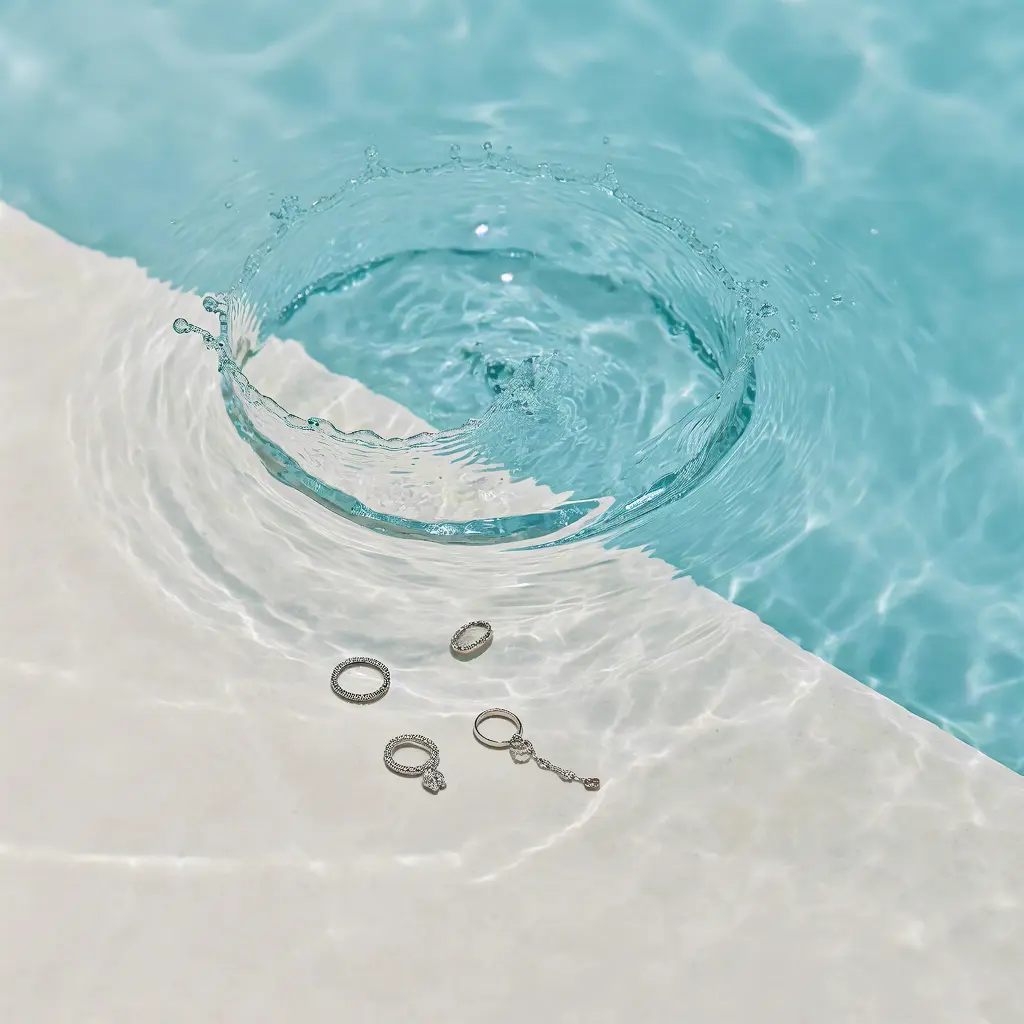
Is Nickel-Free Jewelry Waterproof?
Nickel-free jewelry can be waterproof under the right conditions. Waterproof nature depends on materials and craftsmanship, such as silver, and gold. PVD coatings enhance water resistance, preserving luster. Proper care is crucial for maintaining waterproofing.
Does Nickel Free Jewelry Tarnish?
Despite being crafted with durability and often boasting waterproof features, may not be immune to tarnishing over time. Opting for stainless steel, higher-carat gold, or palladium jewelry can provide longer-lasting shine and resistance to tarnish. Moreover, proper jewelry care techniques can also help it last longer.
Will Nickel Free Jewelry Turn Green?
Nickel-free jewelry typically won’t turn green. However, some use copper or brass bases that can oxidize with sweat, lotions, or moisture, forming a harmless green patina. Plating wear may also reveal underlying alloys. Some pieces are un-coated to show the beauty of copper patina
The Takeaway
Looking for a solution to nickel allergies? Fine Chic’s pieces are thoughtfully crafted with sensitive skin in mind, ensuring wearers can enjoy stylish accessories without the worry of nickel rashes. Explore our collection or design your custom piece now!

